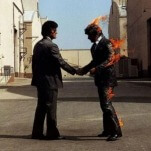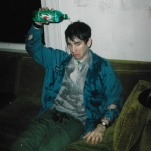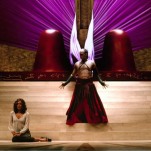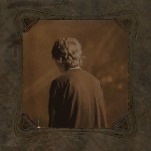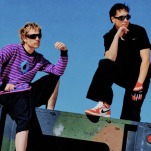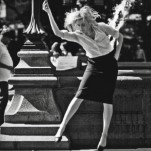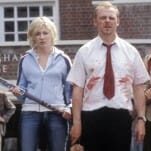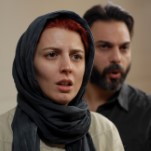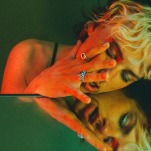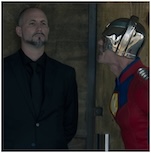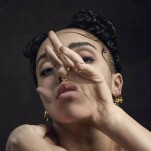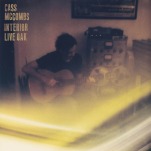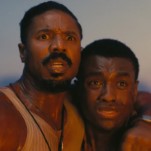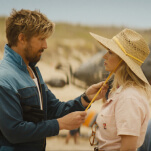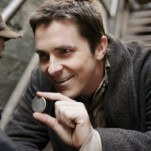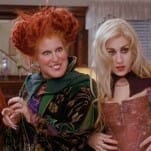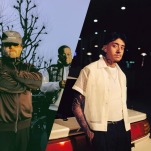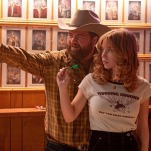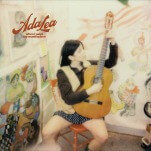Ra Ra Riot
In pop music, consistency is a fickle bitch: Fans love swooning over a signature sound, yet no self-respecting band aims to write the same album twice.
That musical dilemma has defined Ra Ra Riot’s career thus far. Forming around Syracuse University’s campus scene in 2006, their trademark style was already fully realized: They blended the chilly art-rock romanticism of early Kate Bush and Peter Gabriel with the kind of polite, high-brow indie-pop Vampire Weekend exploded with just a year prior. The first Ra Ra Riot album, 2008’s The Rhumb Line, defined modern-day thinking man’s pop: sophisticated grooves, Wes Miles’ expressive tenor, the tense push-pull of Rebecca Zeller’s violin and Alexandra Lawn’s cello. But after 2010’s The Orchard, the band had grown frustrated with their own sound, boxed-in by their pre-set instrumental roles.
“We were really happy with The Orchard,” Miles says. “We produced that record ourselves, and at the time, we were really looking forward to getting our hands dirty and getting in the studio and learning, and it’s really valuable for that reason. But after it was done, we sort of thought, ‘Well, maybe our songwriting process and our arranging process has sort of run its course.’ And it was time for a change.”
“In the past,” he continues, “we arranged things by taking a demo and putting it through the Ra Ra Riot machine—add strings, add guitar riff, and add a bassline and all that stuff. And that worked for us to a degree, for our first two records. But it sort of started to feel like, ‘If we keep going this way, it’s going to start to feel like a burden.’ I know Becca had said a couple times she started to feel like she was handcuffed by her role as a violin player, a string player. We have violin in our band, so it has to be in every song. And that’s one thing we knew we wanted to change—moving away from our pre-determined roles that were associated with just one instrument, or that way of arranging.”
That feeling of restlessness arrived at a crucial time: Lawn (and her defining cello) had recently jumped ship, along with then-drummer Gabriel Duquette, whose propulsive drumming had been an essential force on The Orchard. Whittled down to the core quartet of Miles, Zeller, bassist Mathieu Santos and guitarist Milo Bonacci, Ra Ra Riot now had legitimate motivation to re-define themselves musically. So with the weirder, bolder Beta Love, they’ve done exactly that: embracing neon-bright synths, fractured electronics, and a more polished production style, courtesy of new studio collaborator Dennis Herring.
“When we started working on Beta Love,” Miles says, “it was kinda like, ‘Let’s work on this in a different way. Let’s just service the song. Let’s just decide what the song needs before we decide what the string part is.’ Or previously, we’d be like, ‘How are we gonna adapt these electronic drums to the Ra Ra Riot live show?’ What we could have been asking—and we ended up asking for Beta Love—was ‘Does it actually have to be that way?’”
Herring’s influence and enthusiasm was another crucial ingredient in this artistic about-face. As producer and band bonded during the initial recording process, they established a “modern-feeling” energy that nonetheless borrowed from “old electronic music” like Devo and Kraftwerk. They brought in 606 drum machines and even utilized Miles’ childhood Casio keyboard. Herring also encouraged the band to swap instruments: Santos played guitar on several songs, freeing up Bonacci to flesh out the tunes with drum machines; Zeller worked directly with Herring on the album’s uniquely subtle string arrangements, with Miles relinquishing control completely.
“We were lucky to be working with a producer who understood where we needed to go and where we wanted to go,” Miles says. “And [Herring] helped to facilitate that kind of change. So it was an adjustment, but I’d say that everyone was looking forward to the changing. One of the great moments I remember for the recording was hearing the string parts for the first time. I trusted Dennis and Becca enough to just step back and give them space to write the string arrangements for the record. I remember hearing them for the first time all together sort of in the middle of the recording process, and I was so happy we’d decided to work with Dennis and decided to make these changes. I was a little worried that there’d be such a big chance, and there’d be no strings on a lot of the record. And at a certain part of the process, I thought that would be the best way to go—but leaving it to Becca’s hands and Dennis’ hands, they came up with all these great string arrangements, and I thought, ‘We still have this defining element in our band—they’re just supportive as opposed to lead, and just totally a different vibe.’ They’re playing a different role, so it was exciting to have that change. I know Becca felt liberated—if there’s a whole song or just a verse where there didn’t need to be strings, there didn’t need to be strings! I think that was very freeing for her, and we all experienced that for different levels with each instrument.”
Upon first listen, Beta Love may seem like a less band-oriented effort. And in a way, that’s true: With massive choruses and dance-friendly synths, the giddy, almost Katy Perry-esque “Dance With Me” and the soulful, falsetto-milking title-track feel like hi-fi sequels to Miles’ electro-pop project Discovery. A pair of buzzy electronic tracks (“What I Do For U,” “Wilderness”) feature Miles crooning over minimal drum machine rhythms, spacey synths and little else.
-

-

-

-

-

-

-

-

-

-

-

-

-

-

-

-

-

-

-

-

-

-

-

-

-

-

-

-

-

-

-

-

-

-

-

-

-

-

-

-

